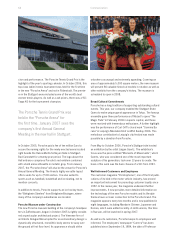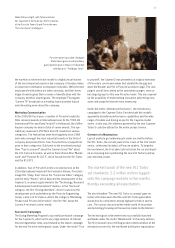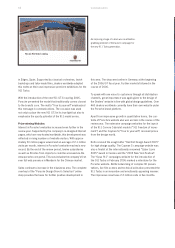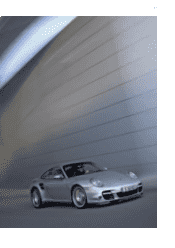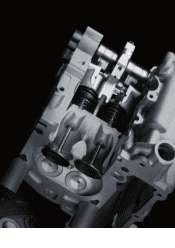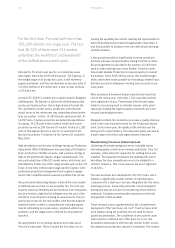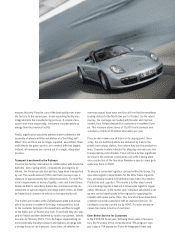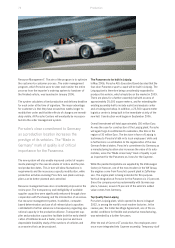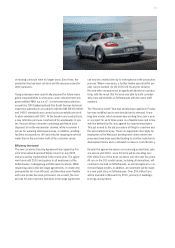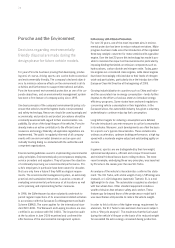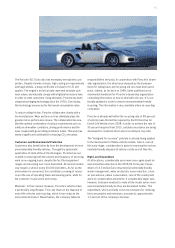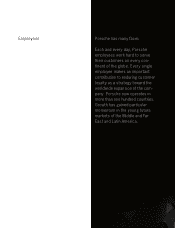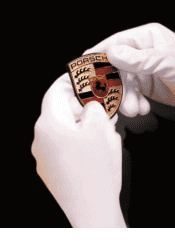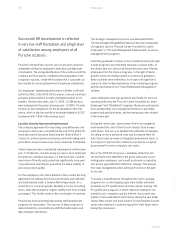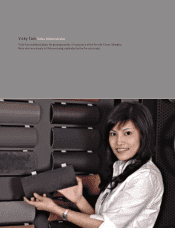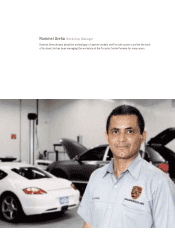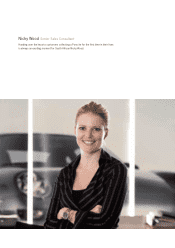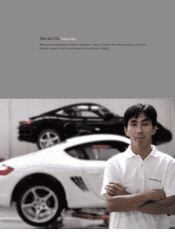Porsche 2005 Annual Report Download - page 76
Download and view the complete annual report
Please find page 76 of the 2005 Porsche annual report below. You can navigate through the pages in the report by either clicking on the pages listed below, or by using the keyword search tool below to find specific information within the annual report.74
Porsche and the Environment
Decisions regarding environmentally-
friendly disposal are made during the
design phase for future vehicle models.
For years Porsche has been proving that developing, produc-
ing and, of course, driving sports cars can be both economical
and environmentally friendly. The company’s declared objecti-
ve is to minimize adverse effects on the environment in all its
activities and furthermore to support international activities.
Porsche has named environmental protection as one of its cor-
porate objectives, and an environmental management system
has been a firm feature of company policy since 1995.
One basic principle of the company’s environmental policy is to
ensure that vehicles meet the highest levels in environmental
and safety technology. Resources should be used sparingly and
economically, and products and product procedures should be
constantly examined with regard to their environmental com-
patibility. By virtue of the long lifespan of its vehicles, Porsche
already makes an active contribution to the efficient use of
resources and energy. Naturally, all applicable regulations are
implemented. The public is regularly informed of all company
events with an environmental dimension and an open and
mutually trusting dialog is conducted with the authorities and
competent organizations.
Environmental guidelines assist in implementing environmental
policy principles. Environmental policy encompasses employees,
service providers and suppliers. They all pursue the objective
of continually improving our environmental performance. Por-
sche’s employees in particular have been aware for decades
that cars only have a future if they fulfill ecological require-
ments. The environmental management system, an extremely
practical and sustainable instrument, is used as a means of
evaluating environmental performance at all locations as well
as for planning and implementing further measures.
In 1996, the Zuffenhausen location voluntarily undertook to
permit regular inspections of its environment-related activities
in accordance with the European Eco-Management and Audit
Scheme (EMAS). The same applies for the international stan-
dard ISO 14001. The Weissach and Leipzig locations are also
certified in accordance with ISO 14001. The inspection audit
at the locations in June 2006 examined and confirmed the
effectiveness of the environmental management system.
In Harmony with Climate Protection
For over 30 years, one of the most important aims in environ-
mental protection has been to reduce exhaust emissions. Major
progress has been made since the introduction of the regulated
three-way catalytic converter for motor vehicles with a gasoline
engine. Over the last 20 years this technology has made it pos-
sible to minimize the impact on the environment in particular by
imposing binding thresholds on emission components such as
hydrocarbons, carbon dioxide and nitrogen oxide. Today, gaso-
line engines are considered clean engines, while diesel engines
have been increasingly criticized due to their levels of nitrogen
oxide and particulates, particularly since the introduction of the
European Clean Air Directive at the beginning of 2005.
Growing industrialization in countries such as China and India –
and the associated rise in energy consumption – lends further
impetus to the efforts of various states to introduce energy
efficiency programs. Some states have anchored regulations
concerning vehicle consumption in their legislation. In the
European Union, the automobile industry has given a voluntary
undertaking to continue reducing fuel consumption.
Long before targets for reducing consumption were defined,
Porsche introduced concrete measures to cut fuel consumption
in its vehicles. Moreover, such developments are often the basis
for a sports car’s typical characteristics. These include extra-
ordinary acceleration, optimum braking performance, a high top
speed with a moderate engine output and outstanding agility on
corners.
In general, sports cars are distinguished by their low weight,
optimized aerodynamics, efficient and compact transmission
and minimal frictional losses due to rolling motions. The most
recent example, embodying these very principles, was launched
by Porsche in the review year: the new 911 Turbo.
An analysis of the vehicle’s characteristics confirms this state-
ment. The 911 Turbo, with a total weight of only 1,585 kilograms
(manual), or 1,620 kilograms (automatic Tiptronic S), is a real
lightweight in its class. The automobile is supplied as standard
with four-wheel drive. Other standard equipment includes a
wealth of devices that enhance safety and comfort. These
features go far beyond those of the predecessor model but it
was nevertheless still possible to reduce the vehicle weight.
In order to field criticism of the higher energy requirement for
aluminum, the 911 Turbo’s new aluminum doors were subject-
ed to a “lifecycle analysis”. The result was that the fuel saved
during the vehicle’s lifespan on the basis of its reduced weight
far exceeded the extra energy consumed during production.
Umwelt


